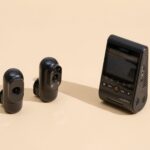Out of the billions of Hot Wheels cars produced since 1968, a select few have become highly sought-after treasures for collectors. These miniature vehicles, once costing just pennies, can now fetch prices that rival real automobiles. But what makes certain Hot Wheels so incredibly valuable? It’s a combination of factors, including rarity, condition, production errors, and historical significance.
Whether you’re a seasoned collector or just curious about the potential goldmine in your attic, this guide will dive into some of the most expensive Hot Wheels cars ever made. Prepare to be amazed by the values attached to these tiny toy cars, and perhaps gain some insight into what makes a Hot Wheel truly worth money.
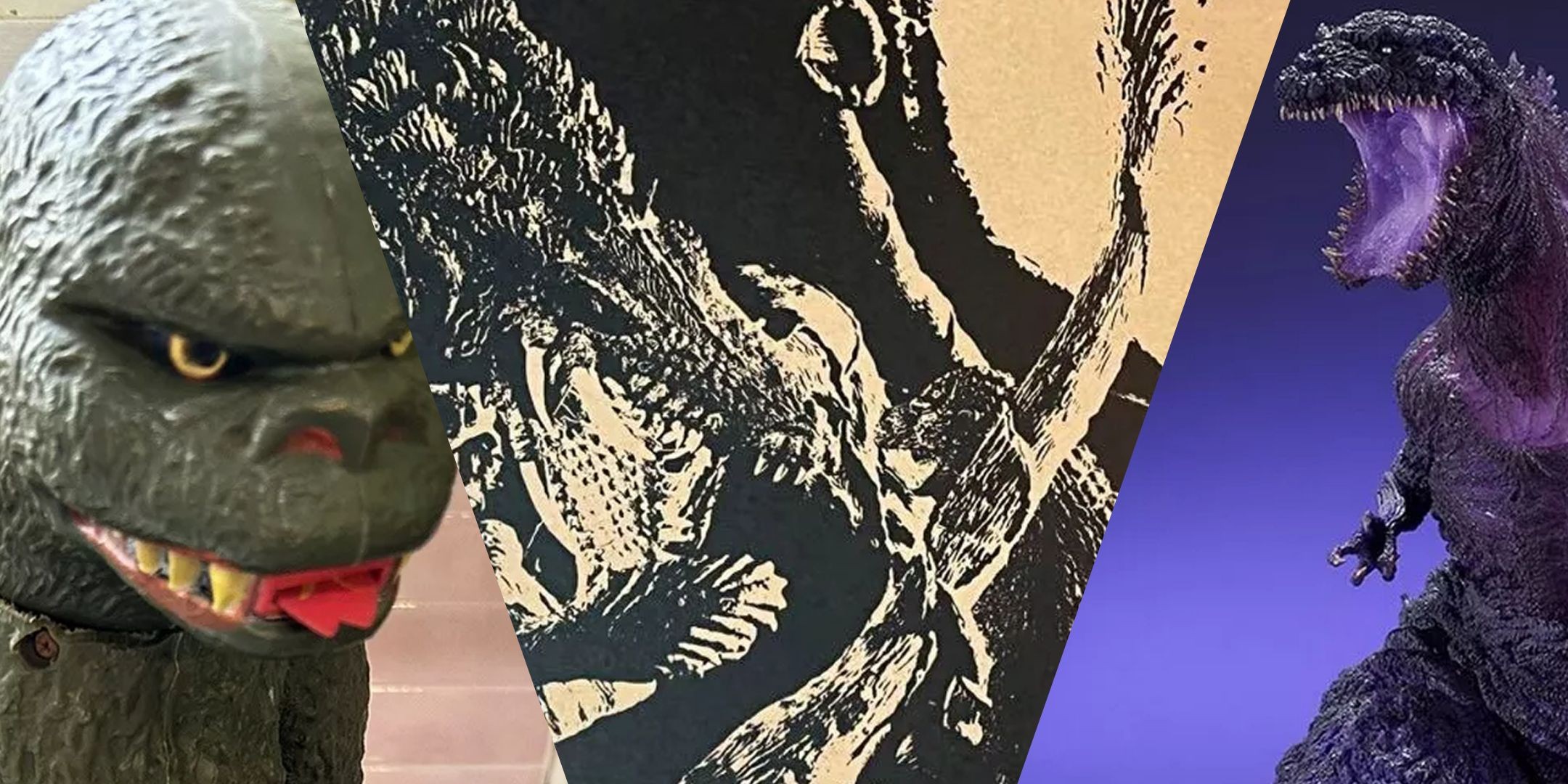 A Split Image Depicting Images Of Godzilla Toys.
A Split Image Depicting Images Of Godzilla Toys.
1. 2008 Diamond-Encrusted Hot Wheels: The Pinnacle of Value
- Key Feature: 18-karat white gold frame, 2,700 diamonds, red ruby taillights.
- Year Released: 2008
- Estimated Value: $140,000+
Topping the list and reigning supreme as the most expensive Hot Wheels car ever created is the Diamond-Encrusted Hot Wheels. This isn’t your average die-cast car; it’s a masterpiece of jewelry and toy craftsmanship. Created to celebrate Hot Wheels’ 40th anniversary and the production of their 4 billionth car, this one-of-a-kind model is encrusted with a staggering 2,700 diamonds (weighing 23 carats!) and features taillights made of red rubies. The frame itself is crafted from 18-karat white gold. This isn’t just a toy; it’s a rolling piece of fine art, justifying its staggering value of over $140,000.
2. 1969 Pink Rear-Loading Beach Bomb: The Prototype Worth a Fortune
- Key Feature: Rare pink color, rear-loading design with surfboards loaded from the back.
- Year Released: 1969
- Estimated Value: $80,000 – $125,000
The 1969 Pink Rear-Loading Beach Bomb is legendary in Hot Wheels collecting circles. This Volkswagen Beach Bomb prototype is incredibly rare, with only two known to exist in pink. The “rear-loading” designation refers to the original design where surfboards were loaded into the back of the van. This design was ultimately scrapped because it was too top-heavy and wouldn’t run properly on Hot Wheels tracks. The more common (but still valuable) side-loading Beach Bomb was then produced. However, it’s the pink rear-loading prototype that commands the highest prices, ranging from $80,000 to $125,000, making it one of the most valuable Hot Wheels cars due to its prototype status and extreme rarity.
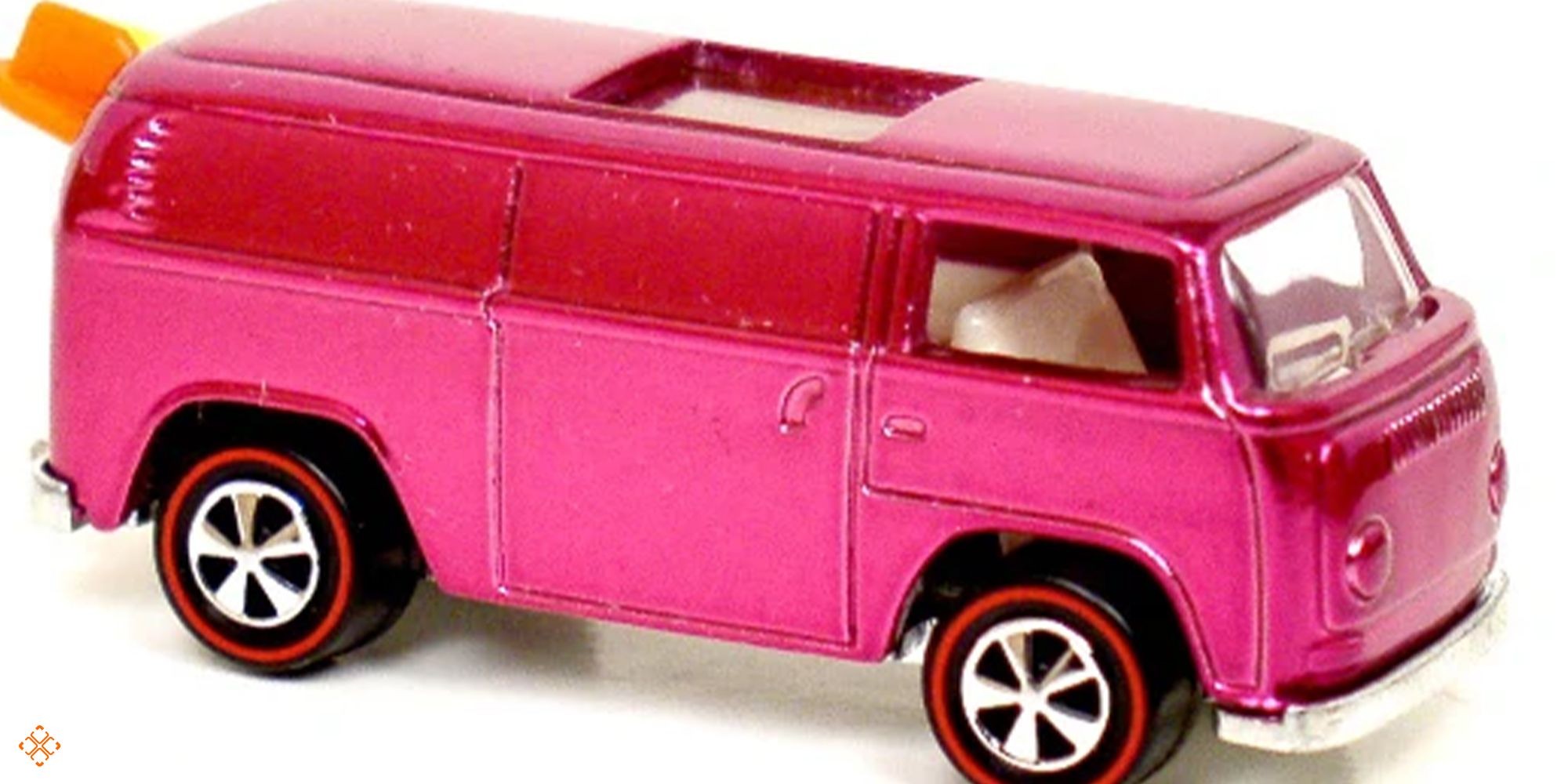 Image of the 1969 Pink Rear-Loading Volkswagen Beach Bomb Hot Wheels.
Image of the 1969 Pink Rear-Loading Volkswagen Beach Bomb Hot Wheels.
3. 1968 Over Chrome Mustang: Advertising Rarity
- Key Feature: Over-chrome finish in red, created for advertising purposes only.
- Year Released: 1968
- Estimated Value: $40,000
The 1968 Over Chrome Mustang is another example of a Hot Wheels car created for promotional reasons that became exceptionally valuable. These Mustangs were produced with a special over-chrome finish in red and were intended solely for advertising, never released for general sale. Only two of these red over-chrome Mustangs are known to exist. Their scarcity, combined with the iconic Mustang model, drives their value up to around $40,000. The story of one being found at a trailer park estate sale adds to the mystique and collector appeal of this rare Hot Wheels find.
4. 1968 Over Chrome Camaro (‘Antifreeze’): A Limited Run for Promotion
- Key Feature: Over-chrome finish in “Antifreeze” (lime green), limited production for advertising.
- Year Released: 1968
- Estimated Value: $25,000
Similar to the Over Chrome Mustang, the 1968 Over Chrome Camaro in “Antifreeze” (a vibrant lime green) was also created exclusively for advertising purposes. This color, often mistaken for the standard “lime” spectraflame, is significantly rarer in the over-chrome finish. It’s estimated that only around 20 of these “Antifreeze” over-chrome Camaros were ever produced. This extremely limited quantity, coupled with the popularity of the Camaro, makes it a highly desirable and valuable Hot Wheels car, fetching prices upwards of $25,000.
5. 1968 Brown Custom Camaro: A Store Display Specimen
- Key Feature: Rare brown color, part of a store display set, rumored to have never been sold individually.
- Year Released: 1968
- Estimated Value: $3,000 (individual), $50,000 (Store Display Set)
The 1968 Brown Custom Camaro stands out due to its unique color and its intended purpose as part of a store display set. Rumor has it that the Brown Camaro was never sold individually to the public, making it inherently rarer than other colors of the same model. As part of the 16-car 1968 Store Display Set, the Brown Camaro is a key piece for serious collectors. While an individual Brown Camaro can be worth around $3,000, a complete 1968 Store Display Set, including the Brown Camaro, can command prices estimated at $50,000, highlighting the value of completeness in vintage Hot Wheels collections.
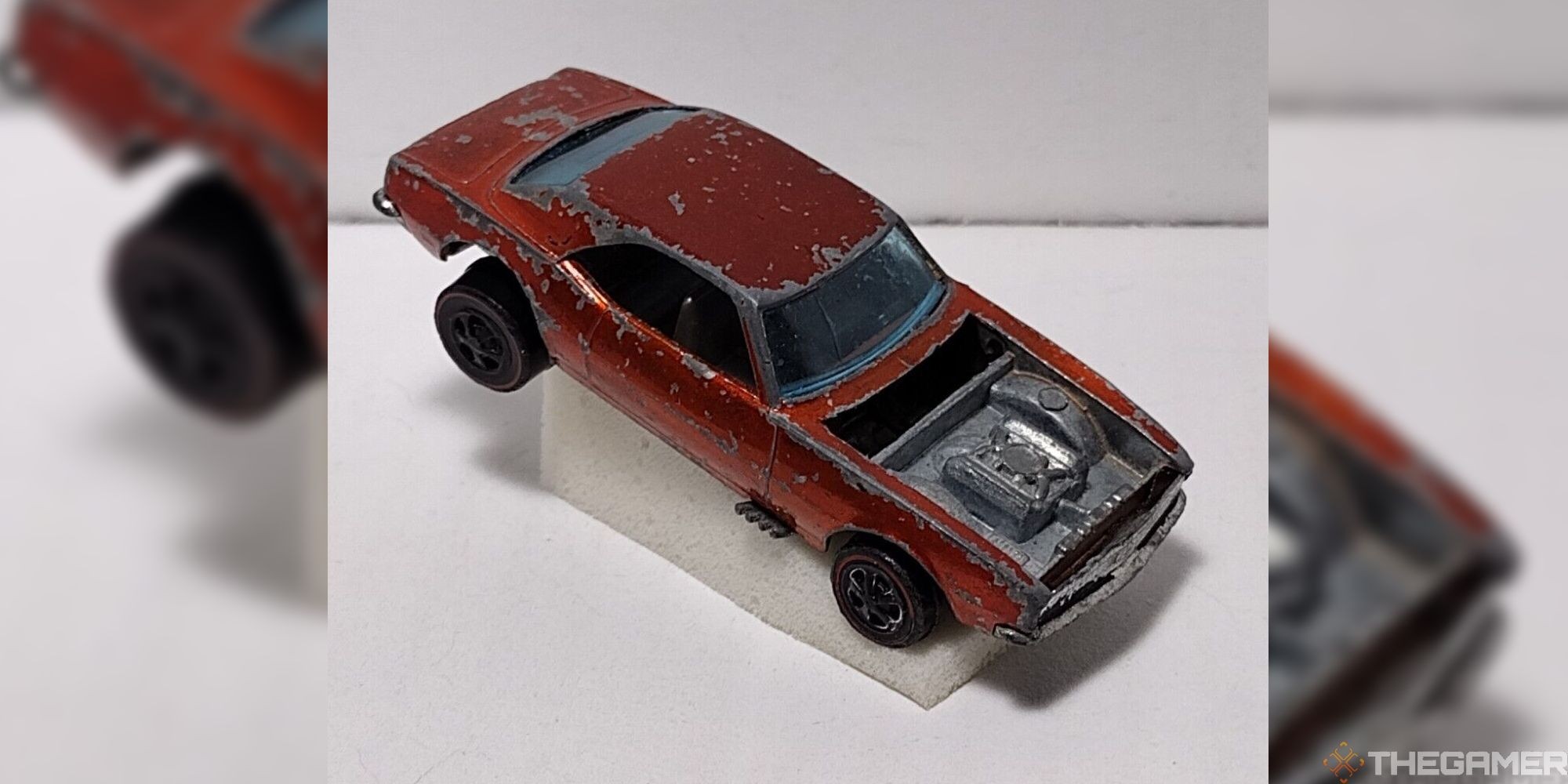 Image of the 1968 Brown Custom Camaro Hot Wheels.
Image of the 1968 Brown Custom Camaro Hot Wheels.
6. 1968 Enamel White Custom Camaro: The Imperfection Check Prototype
- Key Feature: White enamel paint, prototype for checking imperfections, extremely rare.
- Year Released: 1968
- Estimated Value: $2,500+
The 1968 Enamel White Custom Camaro holds a special place in Hot Wheels history as the very first model released. The white enamel version, however, is a prototype created for factory quality control. Manufacturers often painted prototypes white or black to easily identify any imperfections in the casting. Only a handful of these Enamel White Custom Camaros are believed to have been released, likely accidentally. Even in poor condition, these prototypes are highly valuable, starting at around $2,500 and potentially much more if found in better condition or with original packaging (though no blister pack versions have ever been discovered).
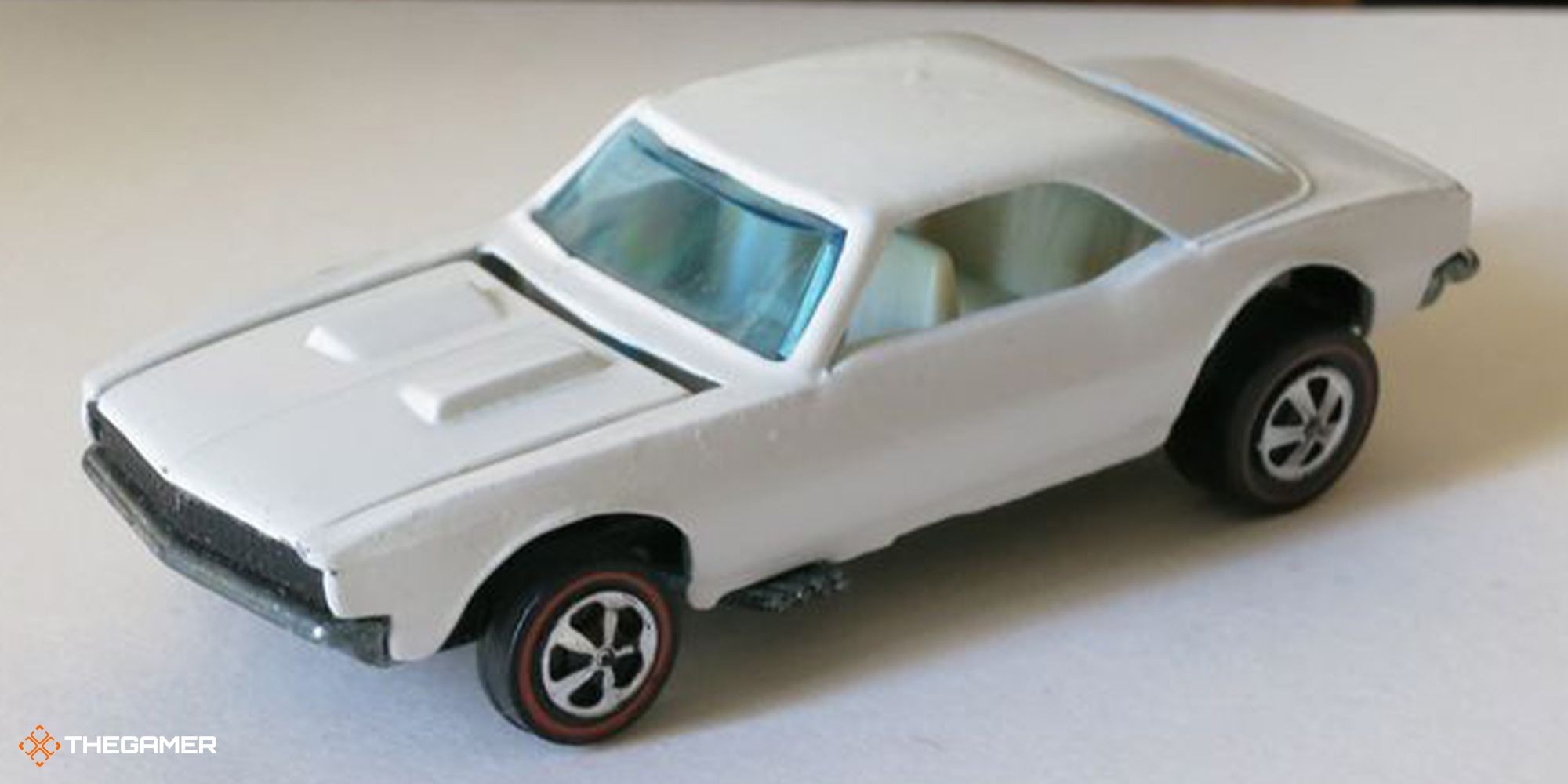 Image of the 1968 Enamel White Custom Camaro Hot Wheels.
Image of the 1968 Enamel White Custom Camaro Hot Wheels.
7. 1969 Purple Redline Olds 442: The Rarest Redline Era Casting
- Key Feature: Purple color, rarest color for this casting, Redline wheels (1968-1977 era).
- Year Released: 1971
- Estimated Value: $1,500 – $7,000
The 1969 Purple Redline Olds 442 is considered the rarest casting from the Redline era of Hot Wheels (1968-1977), known for their distinctive red-striped tires. Designed by Larry Wood and based on the 1970 Oldsmobile 442, this casting debuted in 1971. While various colors of the Olds 442 are collectible, the purple version is the most sought-after. Even examples in less-than-perfect condition are still valuable, ranging from $1,500 to $7,000 depending on condition and specific features like glass tint and included decal sheets.
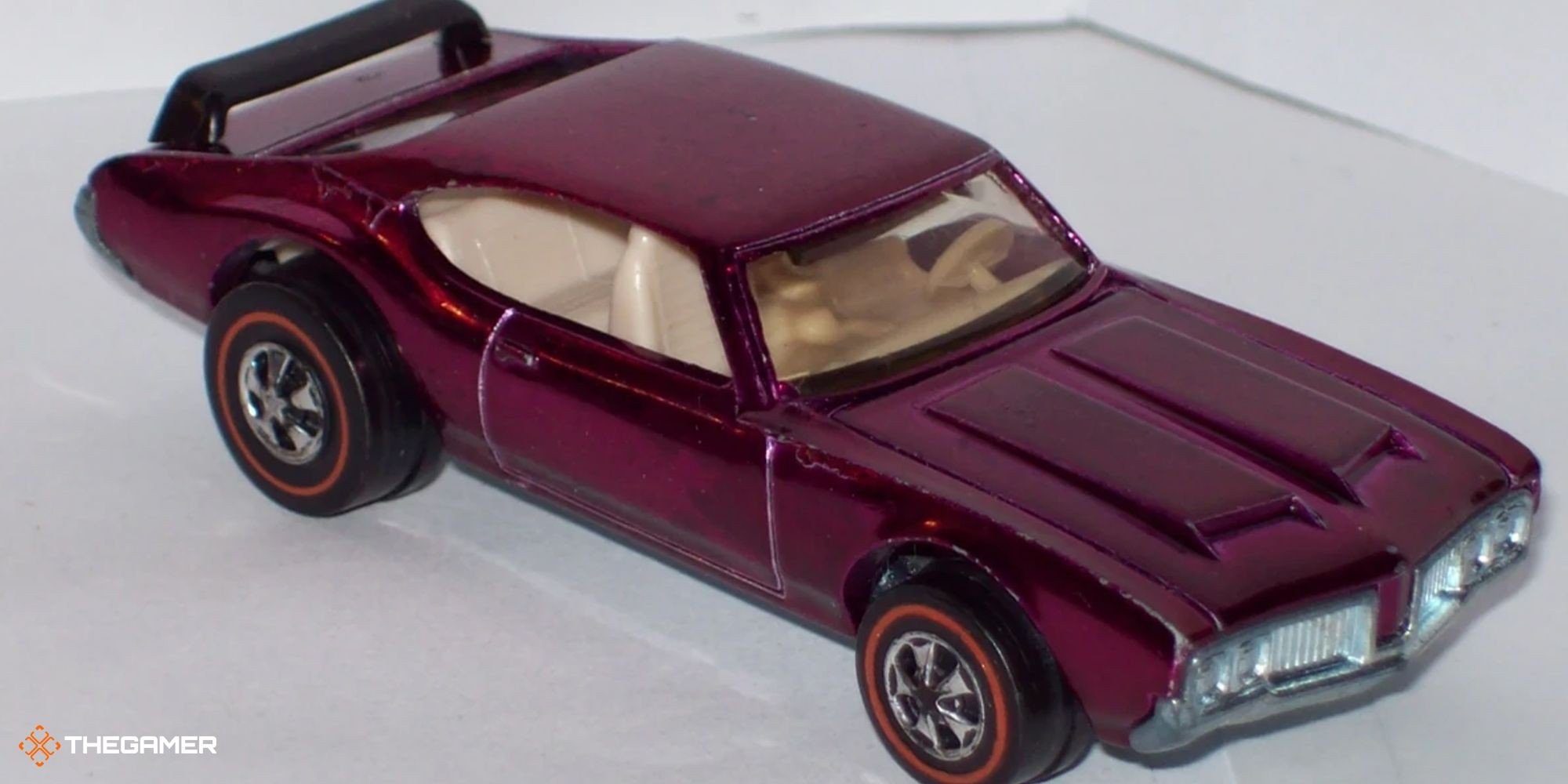 Image of the 1969 Purple Redline Olds 442 Hot Wheels.
Image of the 1969 Purple Redline Olds 442 Hot Wheels.
8. 1973 Rodger Dodger (Blue): UK Exclusive Rarity?
- Key Feature: Blue paint, extremely rare color, rumored UK exclusive, based on 1973 Dodge Charger SE.
- Year Released: 1973
- Estimated Value: $8,000
The 1973 Rodger Dodger, based on the 1973 Dodge Charger SE, is already a popular Hot Wheels model. However, the blue-painted version is incredibly rare, with only about seven known to exist. Rumored to be a UK exclusive release, the blue Rodger Dodger is a true grail for serious collectors. These rare blue versions can command prices around $8,000, making them significantly more valuable than the more common colors of the same model.
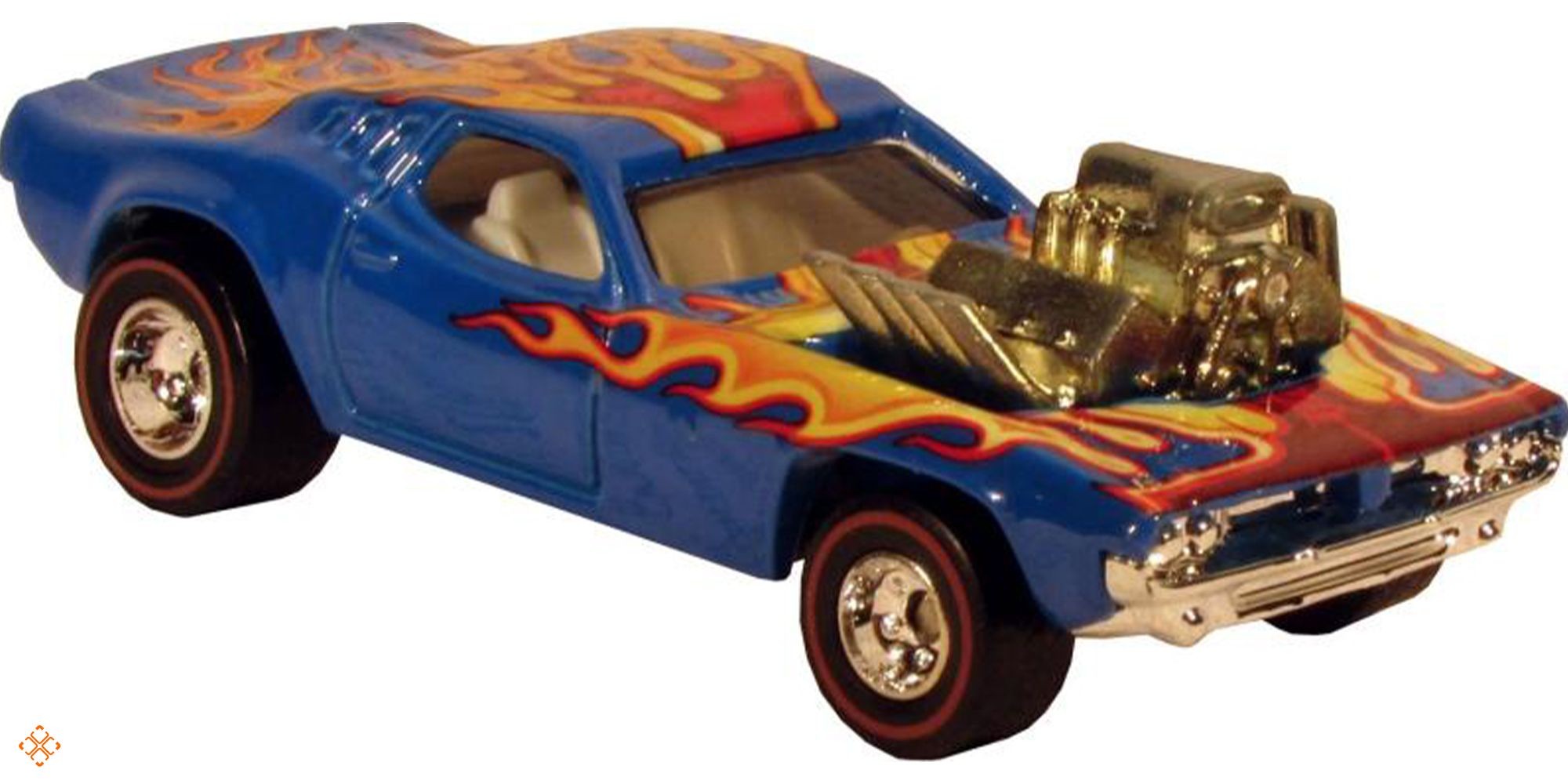 Image of the 1973 Blue Rodger Dodger Hot Wheels.
Image of the 1973 Blue Rodger Dodger Hot Wheels.
9. 1969 Brown ’31 Woody: A Limited Run Color Variant
- Key Feature: Brown spectraflame paint, very limited production, based on a classic ’31 Woody design.
- Year Released: 1969
- Estimated Value: $8,000
The 1969 Brown ’31 Woody is valuable due to the rarity of its brown spectraflame color. While the ’31 Woody was released in 17 different spectraflame colors, the brown variant is believed to be the rarest, with possibly only a dozen or so ever made. This limited production run makes the brown ’31 Woody a highly sought-after color variant, fetching prices around $8,000. Its classic “woody” wagon styling also adds to its appeal for collectors interested in vintage designs.
10. 1968 Python with Cheetah Base: A Naming Conflict Rarity
- Key Feature: “Cheetah” baseplate, early production run before name change to “Python”, red color.
- Year Released: 1968
- Estimated Value: $10,000+
The 1968 Python with a “Cheetah” base is a fascinating example of value arising from a production change. Initially named “Cheetah Python,” early versions of this model were produced in Hong Kong with the name “Cheetah” on the baseplate. However, due to a naming conflict with Bill Thomas’s Cobra Killer model named “Cheetah,” the Hot Wheels car was renamed “Python.” Only a few of these early “Cheetah” base versions in red escaped production before the name change. This short production run and the historical significance of the naming correction make the 1968 Python with Cheetah base a valuable Hot Wheels car, worth $10,000 or more.
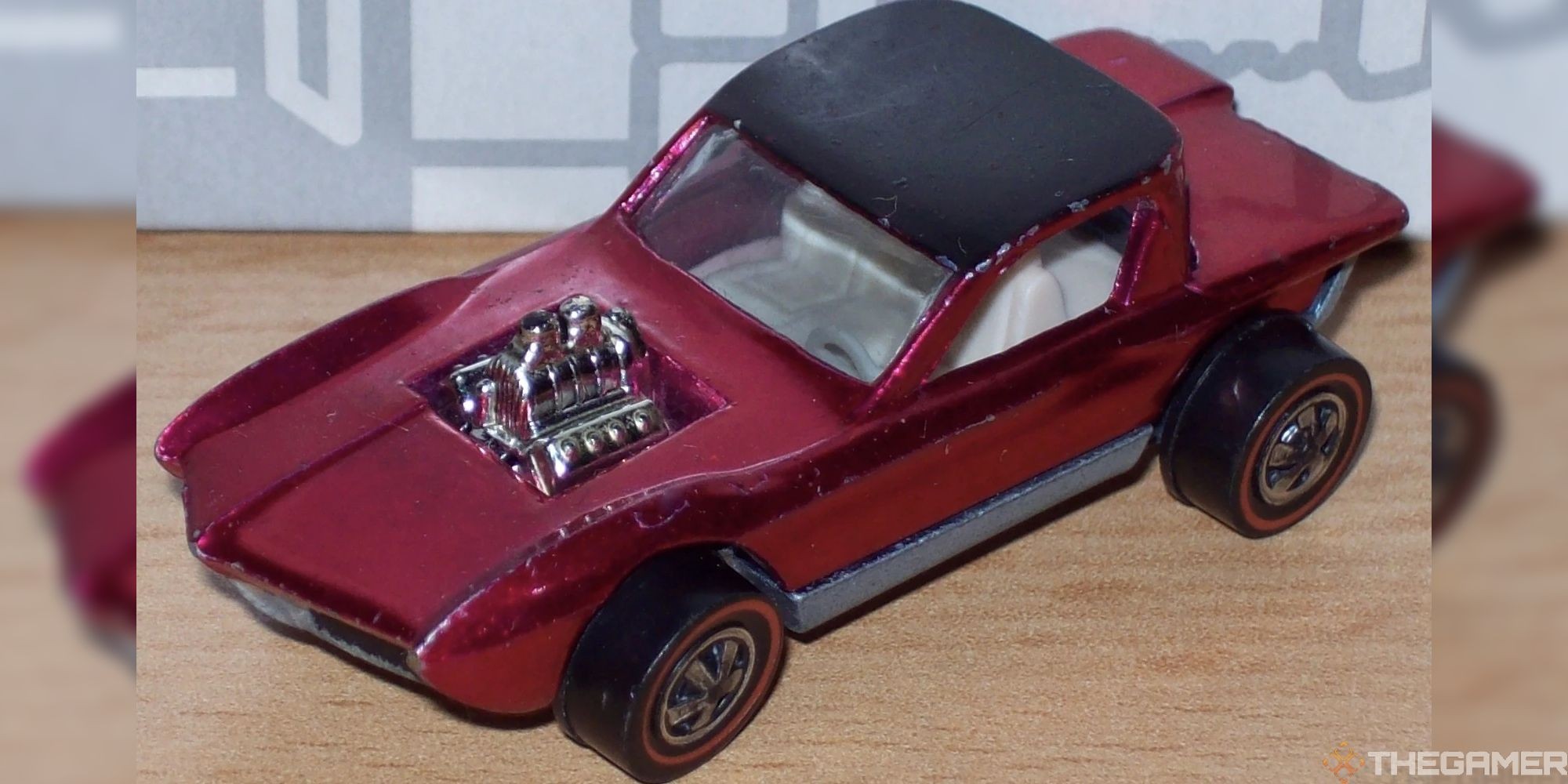 Image of the 1968 Python With Cheetah Base Hot Wheels.
Image of the 1968 Python With Cheetah Base Hot Wheels.
11. 1969 Brown Custom Charger: Spectraflame Fade Factor
- Key Feature: Brown spectraflame paint, rarest color for this model, spectraflame paint prone to fading.
- Year Released: 1969-1971
- Estimated Value: $13,000
The 1969 Brown Custom Charger is another Hot Wheels car where the brown spectraflame color is the key to its high value. Released from 1969 to 1971 in 16 spectraflame colors, the brown variant is the rarest. Collectors seeking this model should be aware that spectraflame paint is known to fade over time, potentially making color identification challenging. A genuine Brown Custom Charger in good condition can fetch around $13,000, but careful inspection of the color is crucial to ensure authenticity.
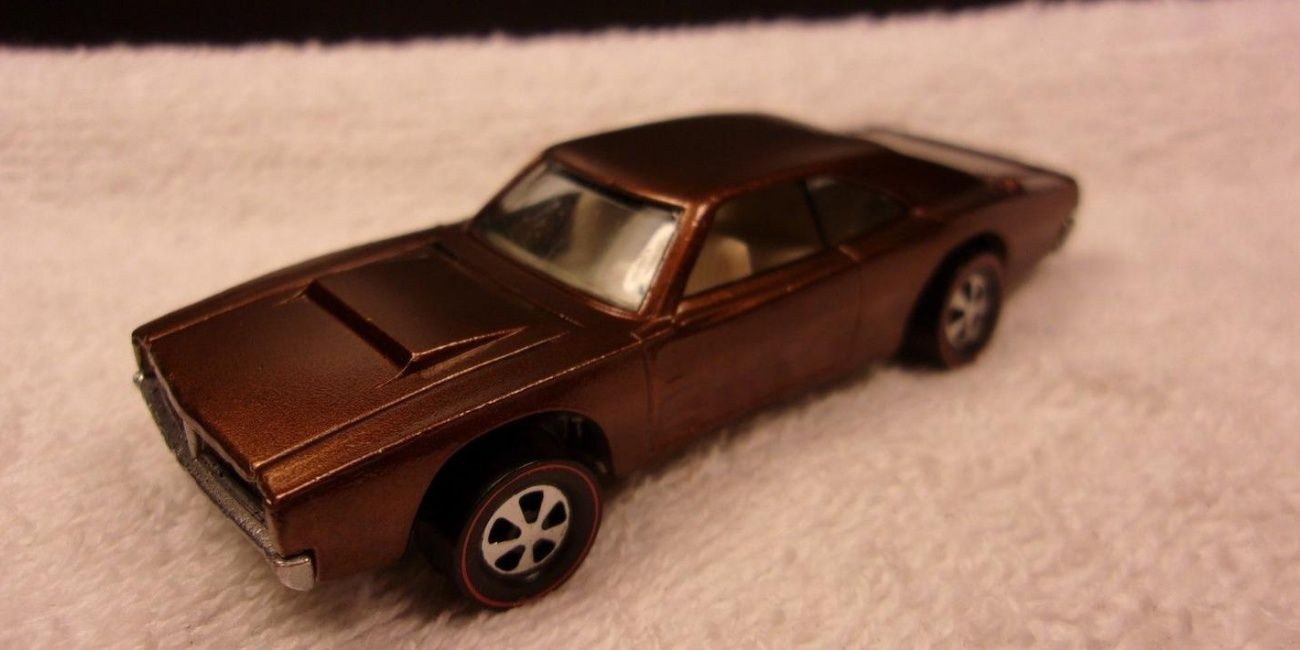 Image of the 1969 Brown Custom Charger Hot Wheels.
Image of the 1969 Brown Custom Charger Hot Wheels.
12. 1970 Mighty Maverick (‘Mad Maverick’ Base): Copyright Correction Value
- Key Feature: “Mad Maverick” baseplate, early production error due to copyright issues, later corrected to “Mighty Maverick.”
- Year Released: 1970
- Estimated Value: $15,000
The 1970 Mighty Maverick, originally intended to be named “Mad Maverick,” gained value due to a copyright issue. Early production runs of this model featured a baseplate stamped “Mad Maverick.” However, due to copyright concerns, the name was quickly changed to “Mighty Maverick.” These early versions with the “Mad Maverick” baseplate are now highly collectible due to the production error and short lifespan. A 1970 Mighty Maverick with the “Mad Maverick” base can be worth around $15,000, showcasing how even production mistakes can significantly increase a Hot Wheel’s value.
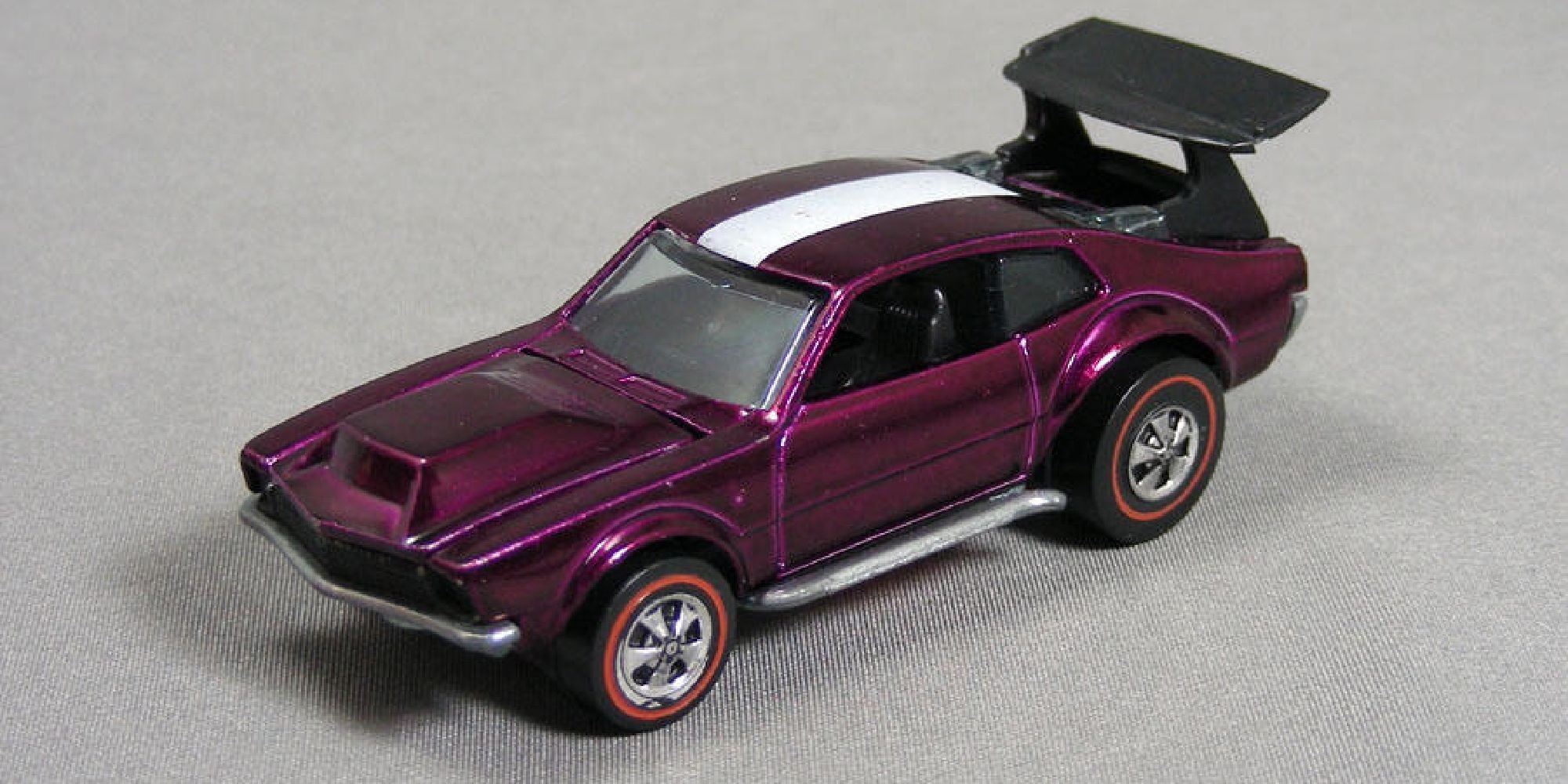 Image of the 1970 Mighty Maverick Hot Wheels.
Image of the 1970 Mighty Maverick Hot Wheels.
13. 1971 Spectraflame Purple Bye-Focal: Color and Condition Challenges
- Key Feature: Spectraflame purple color, rarest variant, body prone to crumbling issues.
- Year Released: 1971
- Estimated Value: $6,000
The 1971 Spectraflame Purple Bye-Focal stands out as the rarest color variant of this Hot Wheels model. While the Bye-Focal was released in various configurations and colors, the purple spectraflame version is the most challenging to find. However, a significant issue with this model is the body’s tendency to crack and crumble over time, making examples in good condition even rarer and more valuable. A 1971 Spectraflame Purple Bye-Focal in good condition can be valued at approximately $6,000, but condition is a critical factor for this particular model.
14. 1972 Pink Superfine Turbine: Fluorescent Rarity
- Key Feature: Fluorescent enamel pink color, rarest color for this model, limited one-year production.
- Year Released: 1973
- Estimated Value: $3,500
The 1972 Pink Superfine Turbine is valuable primarily due to its extremely rare fluorescent enamel pink color. While six different versions of the Superfine Turbine were released in 1973, the pink version is exceptionally scarce. Adding to its rarity, the original casting was only produced for a single year. Collectors searching for this Hot Wheel should be aware of reproduction kits and re-releases from later years. A genuine 1972 Pink Superfine Turbine can be worth around $3,500, making it a worthwhile find for dedicated collectors.
15. Hot Wheels 1995 Collector Number 271 (Blue Card): Packaging is Key
- Key Feature: Blue card packaging, part of the 1995 Collector Number series, extremely limited production with blue card.
- Year Released: 1995
- Estimated Value: $3,500
The Hot Wheels 1995 Collector Number 271 with a blue card is a unique case where the packaging significantly impacts value. Officially known by this lengthy name, only 12 of these are believed to exist with the blue card packaging, making it possibly the rarest Hot Wheels model from the 1990s. The car itself is less distinctive, but the ultra-rare blue card packaging is what collectors covet. A 1995 Collector Number 271 is valued around $3,500, but crucially, authentication requires the original packaging, and fake packaging versions exist, highlighting the importance of provenance in collecting.
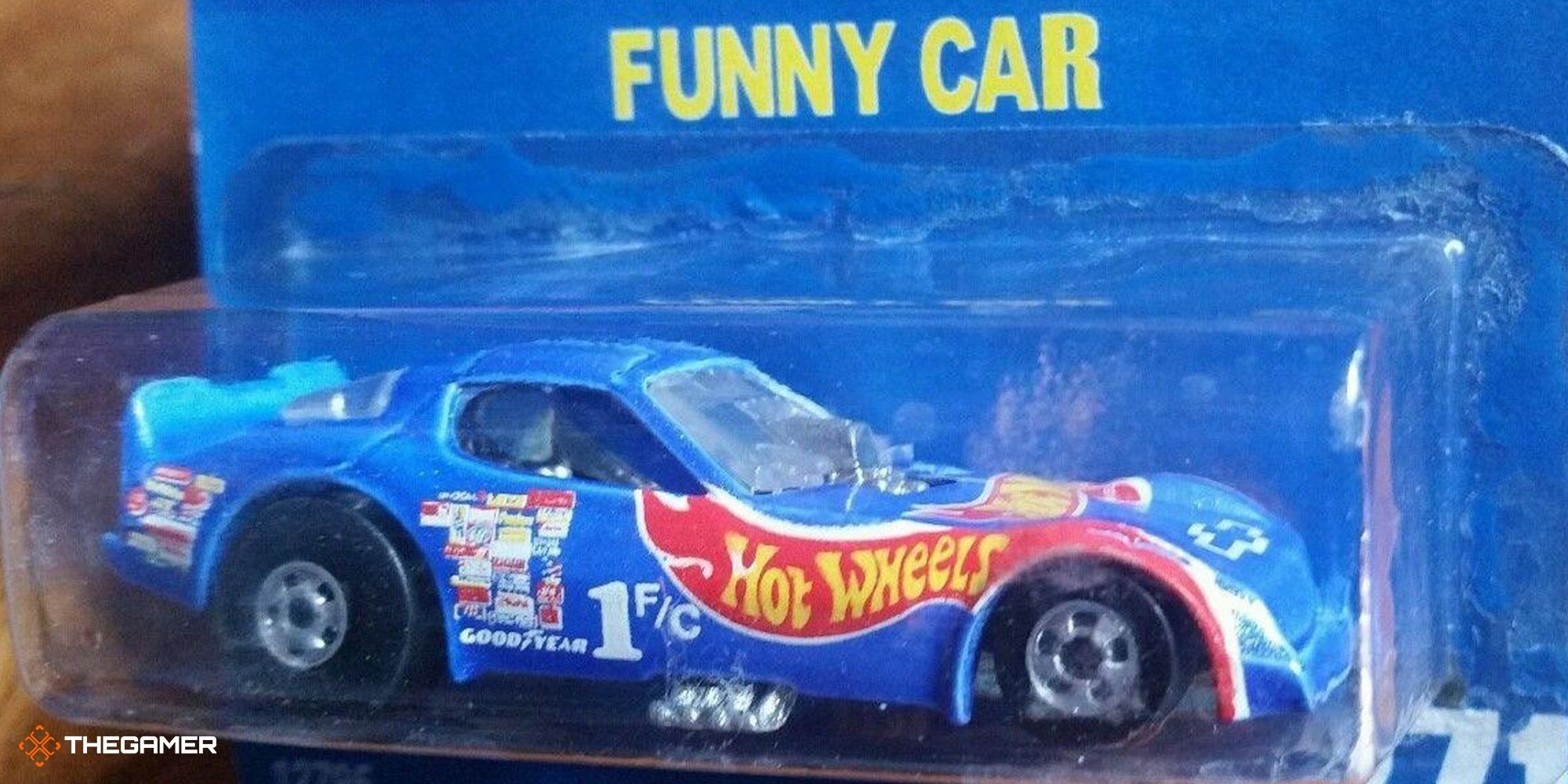 Image of the Hot Wheels 1995 Collector Number 271 Hot Wheels with a blue card.
Image of the Hot Wheels 1995 Collector Number 271 Hot Wheels with a blue card.
16. 1970 Ed Shaver Custom AMX: UK Exclusive Sponsorship Variant
- Key Feature: Ed Shaver decals, UK exclusive release, sponsored version of the Custom AMX.
- Year Released: 1970
- Estimated Value: $4,000
The 1970 Ed Shaver Custom AMX is a UK-exclusive variant of the standard Custom AMX, making it significantly more valuable. This version was a sponsored model, featuring decals promoting Ed Shaver, a famous drag racer. While the standard Custom AMX is relatively common, the Ed Shaver version, sold only in the UK with these specific decals, is much rarer. Authenticity relies on verifying that the Ed Shaver stickers were originally sold with the Hot Wheels car. The 1970 Ed Shaver Custom AMX can fetch around $4,000, demonstrating the value of regional exclusives and promotional tie-ins in the Hot Wheels world.
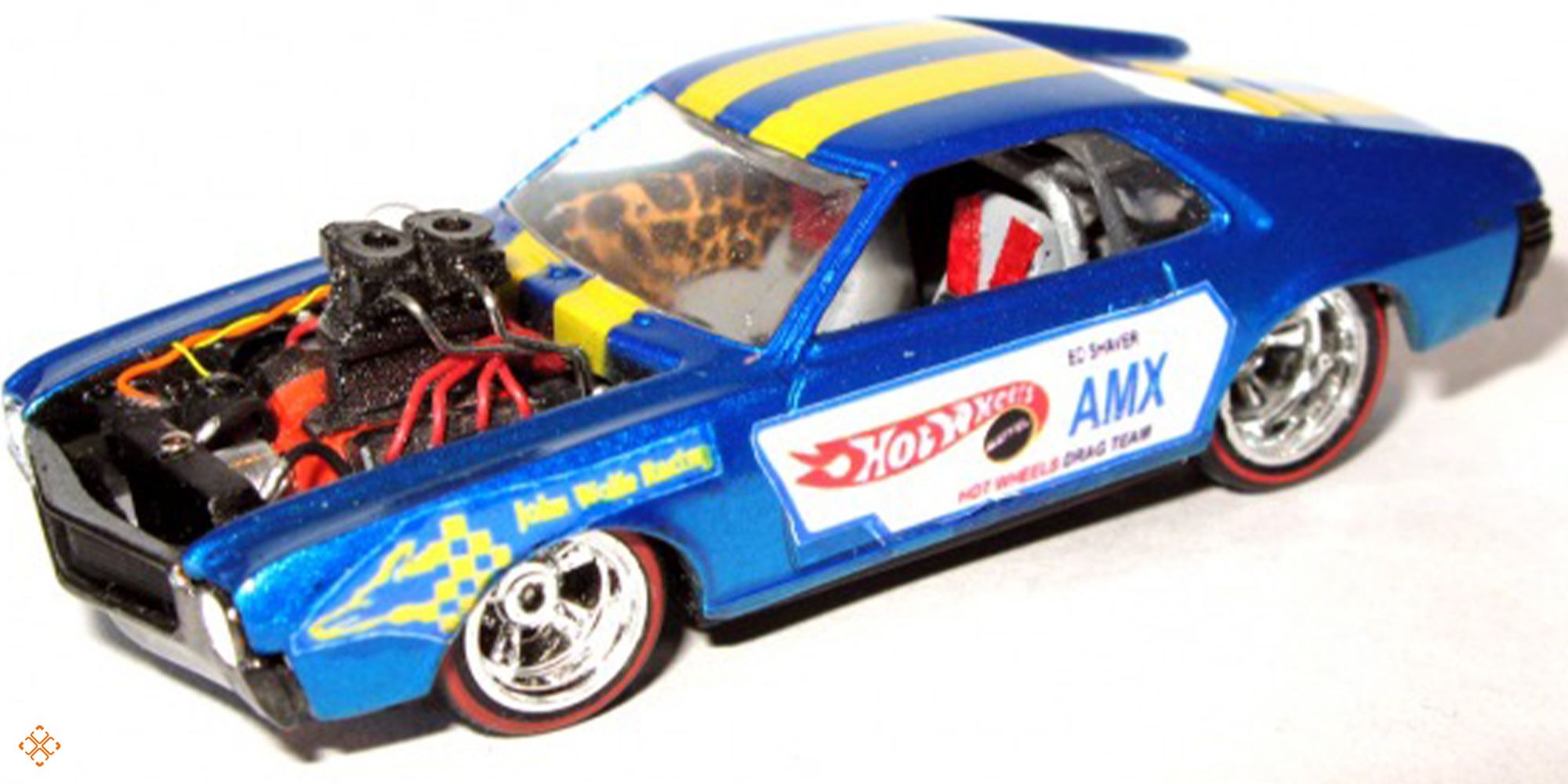 Image of the 1970 Ed Shaver Custom AMX Hot Wheels.
Image of the 1970 Ed Shaver Custom AMX Hot Wheels.
17. 1968 Red Baron (White Interior): Interior Color Error
- Key Feature: White interior, rare error variant, typically comes with a black interior, Red Baron model inspired by Snoopy.
- Year Released: 1968 (original Red Baron), 1970 (rarest variant)
- Estimated Value: $3,000 – $4,000
The 1968 Red Baron, inspired by Snoopy’s nemesis, is a popular and iconic Hot Wheels car. However, certain 1970 Red Baron versions have surfaced with a rare white interior instead of the standard black interior. This interior color variation is believed to be a production error and significantly increases the car’s value. While a standard 1970 Red Baron is already collectible, the white interior variant, with only a handful known to exist, can be worth between $3,000 and $4,000, showcasing the desirability of error cars in the collecting market.
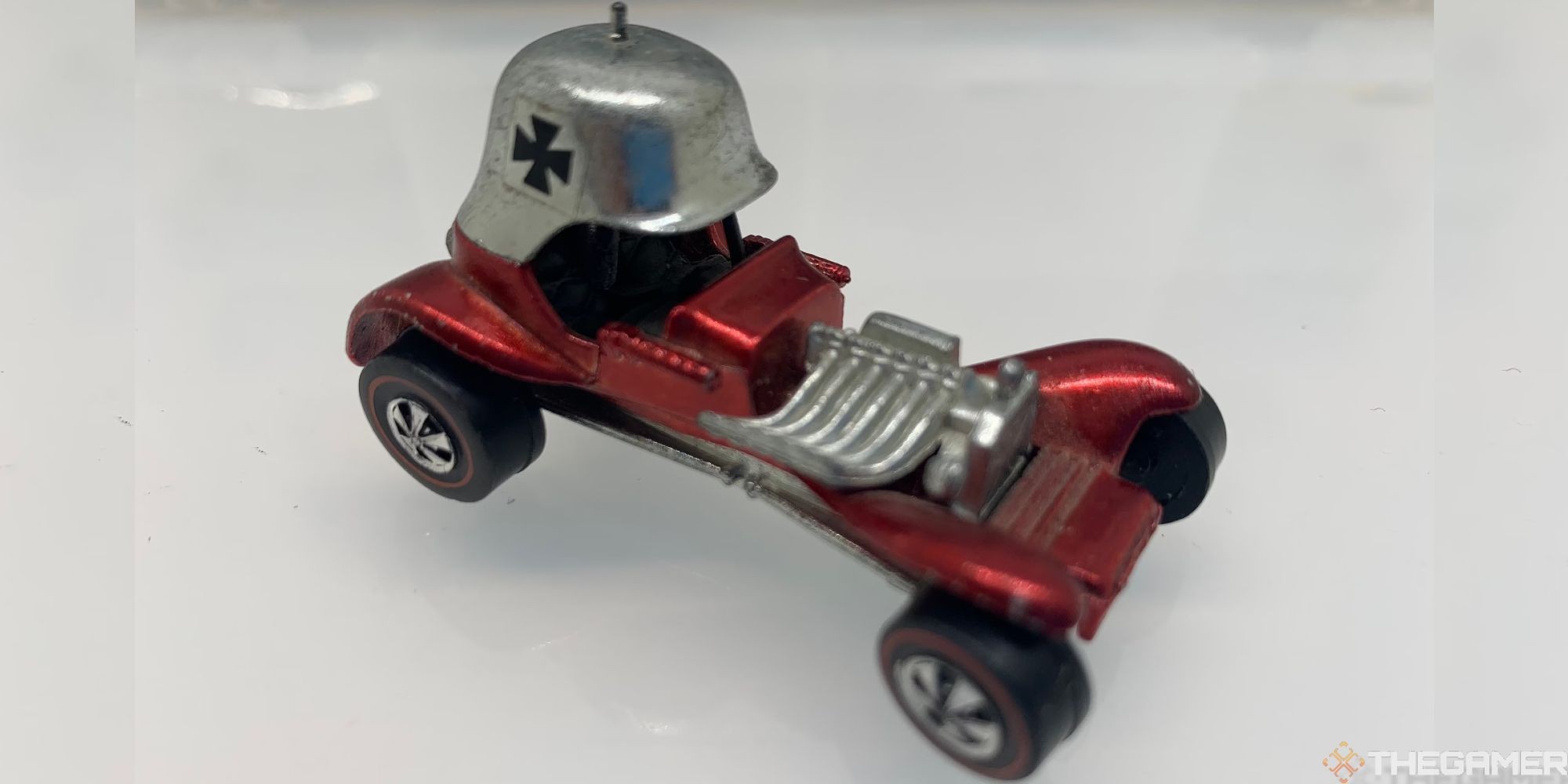 Image of the 1968 Brown Custom Camaro Hot Wheels.
Image of the 1968 Brown Custom Camaro Hot Wheels.
Factors Influencing Hot Wheels Value
Understanding what makes these Hot Wheels worth money involves several key factors:
- Rarity: Limited production runs, prototypes, and errors are the primary drivers of rarity.
- Condition: Mint condition, especially with original packaging (“blister pack”), significantly increases value.
- Color Variations: Certain colors were produced in much smaller quantities, making them highly desirable.
- Production Errors: Mistakes like incorrect baseplates or interior colors can become valuable rarities.
- Historical Significance: First releases, promotional models, and cars with unique stories often command higher prices.
Are There Valuable Hot Wheels in Your Collection?
While finding a Diamond-Encrusted Hot Wheels in your old toy box is highly unlikely, there’s always a chance you might have a valuable Redline era car or a rare color variant tucked away. The world of Hot Wheels collecting is vast and exciting. By understanding what makes certain models valuable, you can start to assess your own collection and perhaps uncover a hidden treasure. Happy hunting!
